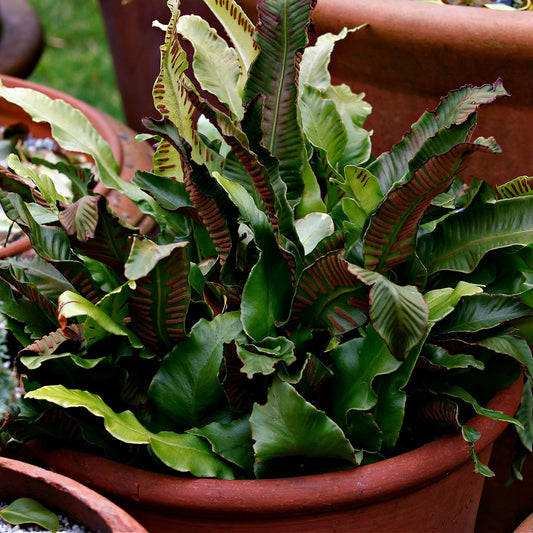Collection: Ferns
-
Choose OptionsRegular price $9.99 USDRegular priceUnit price / per
-
Choose OptionsRegular price $6.99 USDRegular priceUnit price / per
-
Choose OptionsRegular price $6.99 USDRegular priceUnit price / per
-
Choose OptionsRegular price $6.99 USDRegular priceUnit price / per
-
Choose OptionsRegular price $6.99 USDRegular priceUnit price / per
-
Choose OptionsRegular price $6.99 USDRegular priceUnit price / per
-
Choose OptionsRegular price $6.99 USDRegular priceUnit price / per
-
Choose OptionsRegular price $9.99 USDRegular priceUnit price / per
-
Choose OptionsRegular price $6.99 USDRegular priceUnit price / per
-
Choose OptionsRegular price $6.99 USDRegular priceUnit price / per
-
Choose OptionsRegular price $6.99 USDRegular priceUnit price / per
Ferns Remove Powerful Toxins From The Soil
Ferns remove some of the most potent toxins from the soil and the air. They are natural air purifiers and are highly popular with seo conscious homeowners who want to benefit from their cleaning properties. Jetstreams and airborne toxins are prompting people to look beyond the asthetics and see that native plants are the best resources for purification, resilience, and long-term benefits, as well as a natural way to landscape.
Native plants need no heavy chemicals, fungicides, or insecticides; they were native for this reason. They are easy plants to grow, requiring only the intervention of Mother Nature. Ferns are currently the second most diverse category of vascular plants on Earth, behind only flowering plants in the number of species. Ferns exhibit a high level of genetic variation, in part because they have been in existence for a very long time.
What are Ferns?
Ferns are plants that do not produce flowers. They reproduce by making spores. In contrast to flowering plants, these plants do not have flowers or seeds; instead, they reproduce sexually through tiny spores or, in certain circumstances, vegetatively, as the walk variety does.
Types of Ferns for Backyards
A few decades ago, fewer than ten species of them were appropriate for backyard landscaping. Today, there are more than 150 varieties, but Tennessee Wholesale Nursery only deals with hardy, pest-resistant native varieties, so our customers can have healthy plants without incurring additional costs and maintenance.
For example, the Christmas Fern has an evergreen appearance; this plant has fronds that can grow to lengths of more than two feet, helping to prevent soil erosion on slopes with a steep gradient. Landscapers adore it because it is easy to cultivate in various soils, and its attractive appearance makes it a favorite among homeowners.
Diversity In Ferns
The family from which these plants originate is one of the more ancient groupings of plants on our planet. They are hardy and can grow in any corner of the earth, including the driest and most forested regions. Because there is such a wide variety, it should be easy for gardeners to select one that suits their space.
Why Plant Ferns in Gardens?
A garden that is mainly shaded might be given a more delicate and airy appearance by planting it. Many plants can thrive in environments that other plants cannot, including those that are completely shaded. Their delicately textured leaves create a beautiful contrast with the vast, glossy leaves of hostas, the foliage of hellebores, and the colorful leaves of heuchera.
Ferns Require Low Maintenance
They tolerate a wide range of soil types but prefer well-drained soils with a high organic matter content. A layer of mulch is needed to retain moisture and keep the roots cool. Once established, ferns require a yearly application of organic matter, such as manure or organic compounds. Ferns adapt well to their environment and can grow in either shade or sun, provided they are well-watered. The plants require occasional pruning to remove old, distorted, or broken fronds; however, no other care is necessary.
How to Grow Ferns in the Garden?
The ideal environment for growing these shade-tolerant plants is moist, shaded, protected from direct sunlight, and has neutral to acidic soil. They can also be grown in borders or pots. They also thrive in environments of high humidity and proximity to water.
How to Maintain and Care for Ferns?
They are extremely easy to care for; however, if you encounter any issues, the following growth guidelines will help you maintain the health of your plants:
Provide moisture to the soil around ferns:
The soil should never be so saturated with water that it cannot drain, but the top five inches of soil should always be kept moist if you want your plantds to thrive. Be sure to give your fern adequate water during its growing season, especially if it needs more from the rain that naturally falls on it.
Apply fertilizer as required:
There are several types of fern plants, and most of them do not need fertilizer. However, if you are still waiting to see the quantity of new growth you want, you may use a slow-release fertilizer in the spring.











